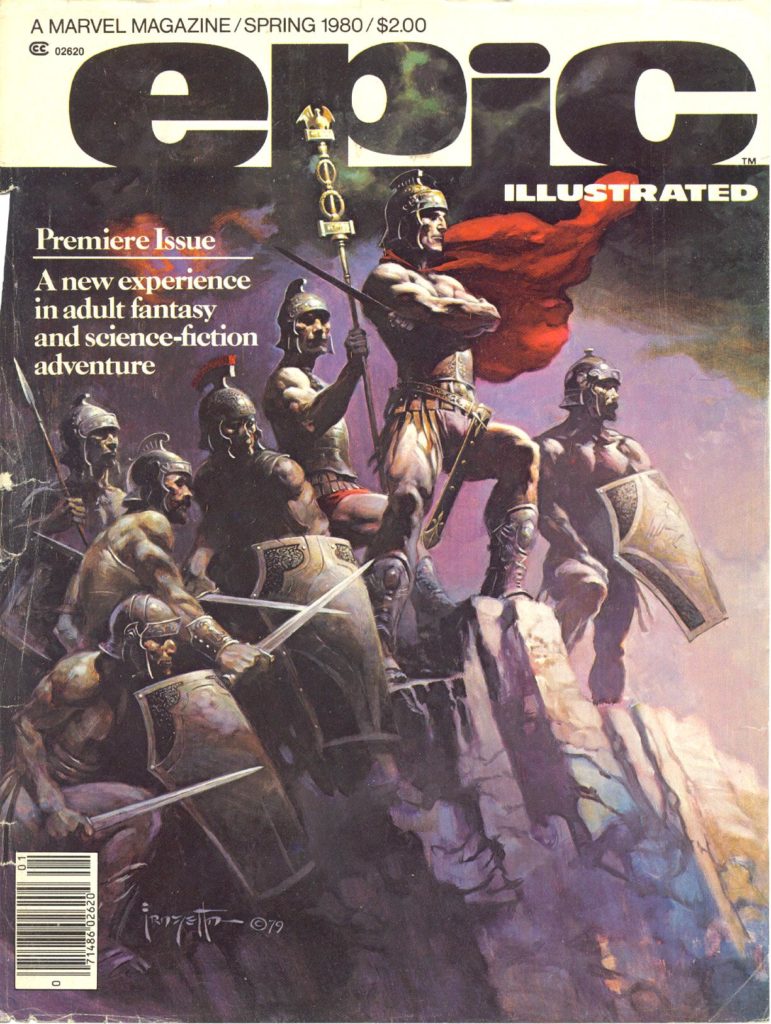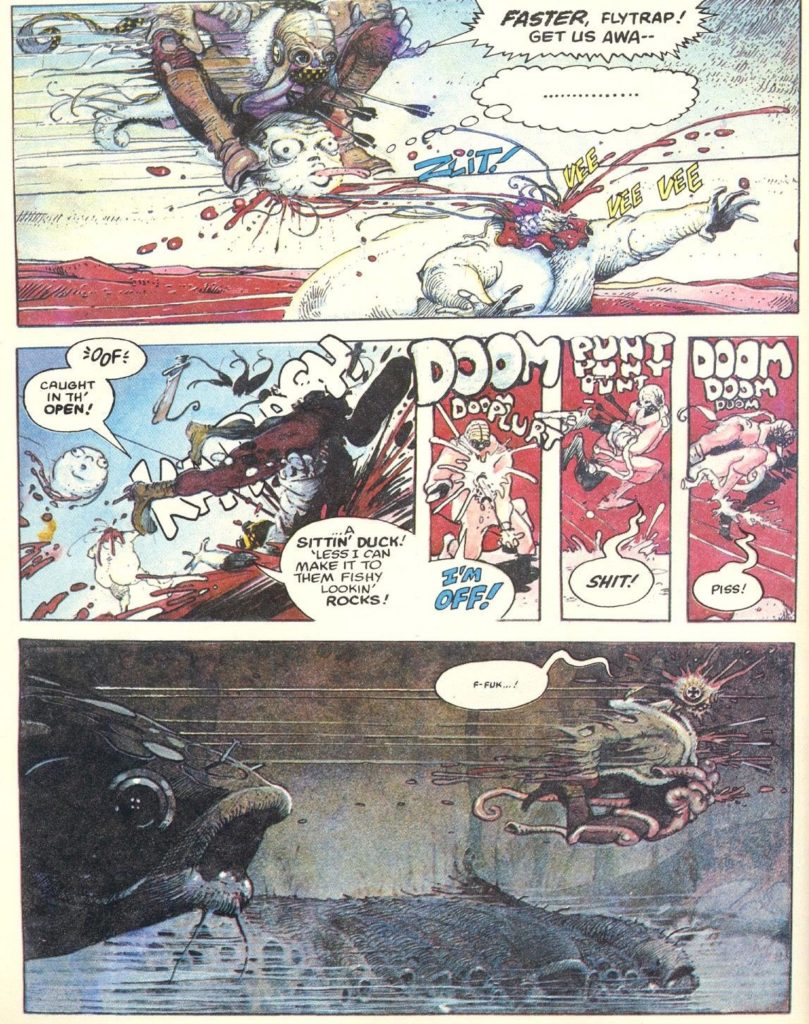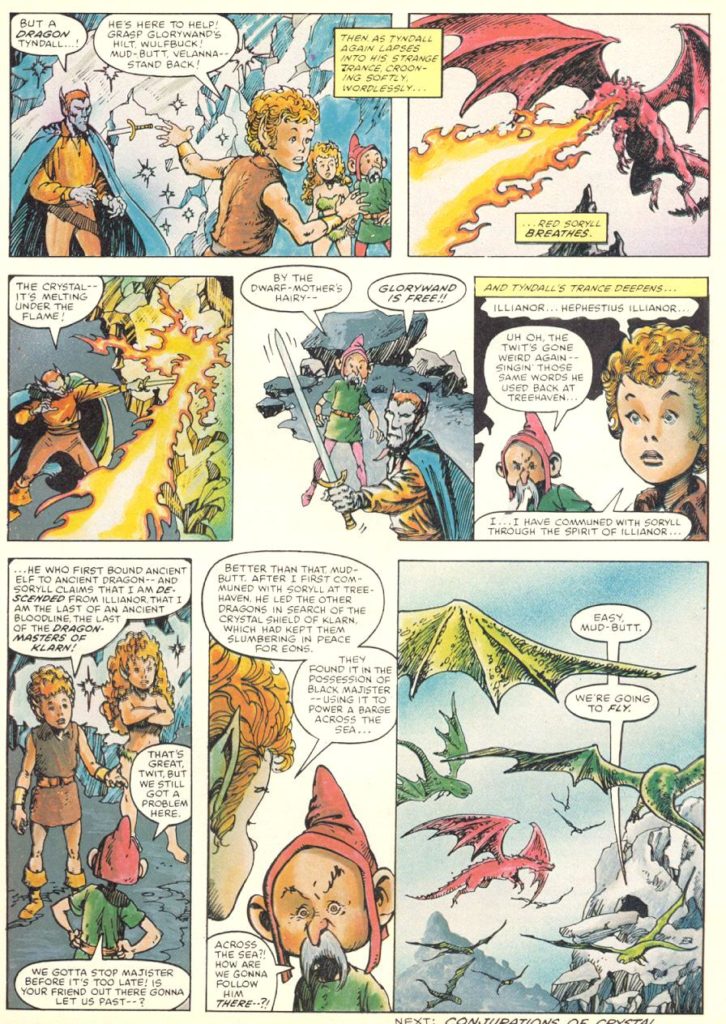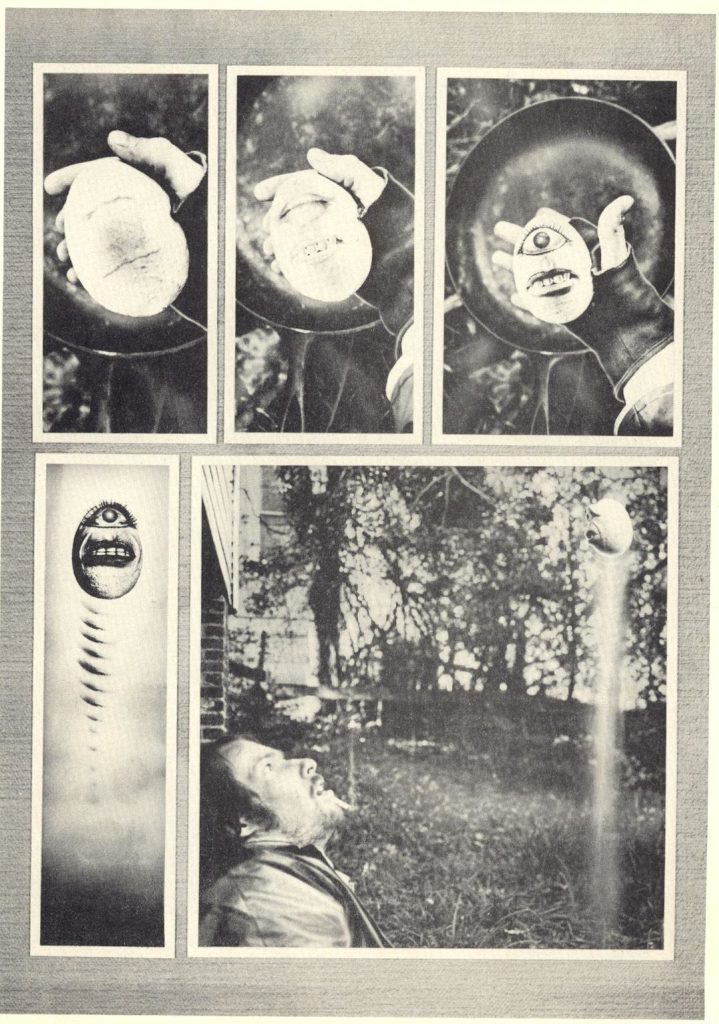Stan Lee saw “Heavy Metal Magazine” eating into his profits, Stan Lee couldn’t have that, so Stan Lee decided to start his own rip off of “Heavy Metal Magazine” known by “Epic Illustrated” by first having Rick Marschall as editor under the title “Odyssey” in 1979, it was originally gonna appear in “The Marvel Super Special” magazine Marschall found out that there was other magazines with that same names so he changed the name to “Epic Illustrated”, he was soon replaced by Archie Goodwin who took over the editorial reins. “Epic Illustrated” started in 1980 as a quarterly with a “Roman Soldier” style Frank Frazetta cover, in my opinion not the best representation of the stories contained within the magazine.

Stan Lee, in the editorial to the first issue, says “Forgive us if we sound presumptive but ‘Epic Illustrated’ is more, far more than merely another new magazine. ‘Epic’ heralds the dramatic start of a new era in publishing, an era which proudly presents long awaited marriage of superb illustration and the best in imaginative fiction.” Thus Marvel’s competition to “Heavy Metal” begins and since this isn’t a comic book and is a magazine, more taboo territory can be covered without running afoul of the “Comics Code Authority”, in other words tits, peoples eyes and brains can pop out, really if you put an issue of “Epic Illustrated” side by side with an issue of “Heavy Metal” you’ll see very little difference even in the print type used in the editorials, letters and reviews section, Archie will be editor until the last issue. “Epic Illustrated” begins as a quarterly until issue five (April 1981) then it goes bi monthly. “Epic” will also use alot of the same artists “Heavy Metal” does, but whereas “Heavy Metal” is more “Eurocentric” in its artist choices, Marvel goes more for American artists, not that they don’t use European artists, there is a smattering of them but this is more of a stateside thing some of the same artists that appear in the pages of both magazines are Ray Rue, Arthur Suydam, Barry Windsor Smith, Howard Chaykin, Richard Corben, Terry Lindell, Jeffery Catherine Jones among others. In the last issue Archie writes “This will be our final ‘Epic Illustrated’. We regret that very much, but with the success of other projects here at Marvel such as our ‘Epic Comics’ line and the ‘Marvel Graphic Novels’ with which we’re involved and with wide reader interest in an anthology style magazine (particularly one as expensive to produce as ‘Epic’) increasingly harder to sustain, this seems the best course. The alternatives, decreasing frequency of publication, cutting the page count or paper quality, raising the price etc. would only lessen a product of which we’re quite proud. We prefer to bring ‘Epic’ to a close while its still the same magazine that we know and love.” I don’t know, “Heavy Metal” survived and is still going today though I’d hesitate to say “strong” but even in its weaker periods it kept the quality up and page count the same, we’re talking about “Marvel” here that was a multi million dollar comic book company that had its fingers in various pies, this seems to me a “Stan Lee cutting costs” type thing to focus on cheaper “Epic” related comics and graphic novels, as opposed to a talent laden, slick, and well produced magazine. Not only that, it seems “Epic Illustrated” leaned more heavily on the fantasy side of things and “Heavy Metal” leaned” more on the science fiction/space opera side of things, especially back in those days. And like “Heavy Metal, “Epic Illustrated” had continuing stories, short pieces, and articles on things pertaining to the whole sci fi/fantasy thing, and like “Heavy Metal” with various artists come different art styles that keep the magazine interesting. The continuing pieces in “Epic Illustrated” are Jim Starlin’s sci fi epic “Metamorphosis Odyssey” with his character Dreadstar seeking to destroy a race of aliens that annihilate whole galaxies published from issue one to issue nine (Spring 1980 to December 1981), Arthur Suydam’s ode to 1950’s sci fi and classic slapstick cartoons “Cholly and Flytrap” appearing in issues eight, ten, thirteen, fourteen, and thirty four (October 1981, February 1982, August 1982, October 1982, February 1986),

Roy Thomas adapts a story from Micheal Moorcock and P. Craig Russel illustrates “A Tale of Elric of Melnibone: The Dreaming City” in issues three (fall 1980), four (winter 1980) and fourteen (October 1982), Roy Thomas adapts yet another pulp sword and sorcery hero from Robert E. Howard, creator of Conan the Barbarian, in “Almuric” where a lantern jawed, big muscled hero from earth travels to a brutal, barbaric world running away from the cops in issues two to five (summer 1980 to April 1981), Rick Veitch with his “Moby Dick in Space” tale “Abraxas and the Earthman” issues ten to seventeen (February 1982 to April 1983), Chris Claremont and John Bolton with their silver haired, barbarian woman warrior in “Marada” in issues ten to twelve (February to June 1982) and (twenty two to twenty three February to April 1984), Carl Potts with Dennis O’ Neil, Terry Austin and Marie Severin’s Japanese samurai warrior in the Pacific Northwest of the US battling dragons and evil samurai in “Last of the Dragons” in issues fifteen to twenty (December 1982 to October 1983), Pepe Moreno of “Heavy Metal” fame illustrates and editor Archie Goodwin writes a post apocalyptic tale of a world trying to heal in “Generation Zero” issues seventeen to twenty four (April 1983 to June 1984), Dean Motter continues what he started in the black and white sci fi comic “Star Ride” this time colorized with “The Sacred and Profane” where the Papacy sends the church into outer space to convert alien races with disastrous consequences in issues twenty to twenty six (October 1983 to October 1984), Doug Moench and Mike Ploog’s “Elf Quest” rip off (a good rip off by the way) “Weirdworld: Dragonmaster of Klarn” a tale of elves, evil wizards, comedic dwarfs and dragons mixed up in a battle that could destroy the world in issue nine, issues eleven to thirteen (December 1981, February 1982 to August 1982,

Tim Conrad spins a medieval tale of sorcery, and golems in realistic black and white with “Toadswart d’Amplestone” in issues twenty five to twenty eight and thirty to thirty three (August 1984 to October 1985), what is a continuing story and I don’t think belongs in “Epic Illustrated” is the Silver Surfer story in issue one, that needs to be in some other compilation, not a sci fi and fantasy compilation magazine, Silver Surfer, while having sci fi elements is more in the super hero genre and that goes for “The Last Galactus” continuing story in issues twenty six to thirty four (October 1984 to February 1986) by John Byrne, while the art is top notch, “The Last Galactus” is part of the Marvel Super Hero Universe and shouldn’t have been in “Epic Illustrated”. That aside it is a pretty solid series and good competition to “Heavy Metal”, just like with “Heavy Metal” I enjoyed the short pieces more than the longer and continuing stories because I have ADD, HA! HA! The review sections started in issue five (April 1981) Jo Duffy who worked for Marvel and was editor and story writer on the original old school “Star Wars” comics comes aboard as associate editor on “Epic Illustrated” and starts the review section that was prominent in their rival “Heavy Metal” at the time, in the issue she becomes associate editor she starts the “Bookview” column where she reviews fantasy and sci fi books and comics, Dennis O’Neil does “Mediaview” where he does tongue in cheek movie reviews and reminiscences about his childhood movie experiences in Indiana, issue seven (August 1981) will add Steven Grant’s “Gameview” where Steven reviews different role playing game modules and computer games and then husband and wife team John Robert Tebbel and Martha Thomases do “Futureview” a column that talks about technology and future possibilities for tech, this column was “better late than never” since it was introduced near the end run of “Epic Illustrated”, the columns ended in issue thirty one (August 1985) near the end of the magazines run. Also included in later issues were artist interviews, profiles and portfolios. Countless imitators came out of the wood work, some awful and some awesome (I’ll get around to reviewing those some day), however, I kind of wish that Stan Lee and company would’ve bit the bullet and continued this magazine, I don’t think its full potential was reached. In fact, I truly believe that if they would’ve continued the magazine they would’ve bested “Heavy Metal”, out of all the fantasy “underground” compilation magazines, “Heavy Metal” is the major one that rode out all the trends, all the economic downturns and bull shit and survives (some like me would argue it barely survives, its a shell of its former self). “Heavy Metal’s” continuing stories and short pieces still bested “Epic Illustrated” and I am not saying by a long shot that “Epic Illustrated” sucks, I just don’t think it was given enough time to grow but what we have is “Epic”.

To have an “Epic” experience go here: https://readfullcomic.com/category/epic-illustrated/
To get physically “Epic” you can find copies of all issues still available on ebay, amazon, etc. Some varying in price depending on condition and availability.
Now get “Epic”!!!!